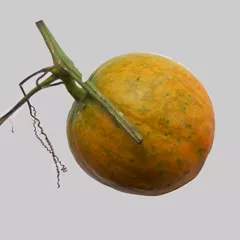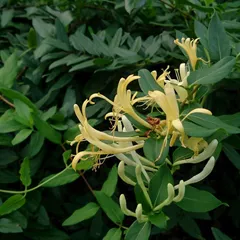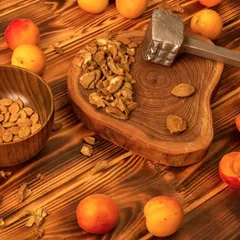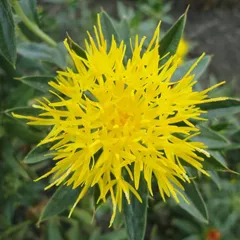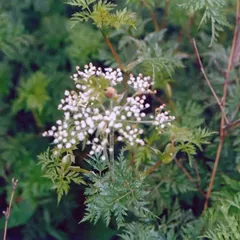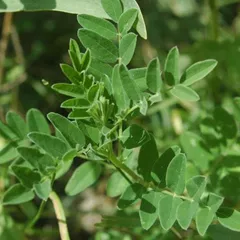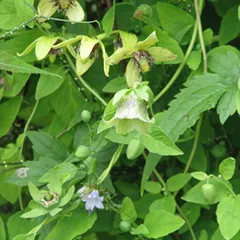Hai Tong Pi Tang
Hai Tong Pi Tang
Chinese: 海桐皮汤
Pinyin: Hǎi Tóng Pí Tāng
Other names: Erythrina Wash
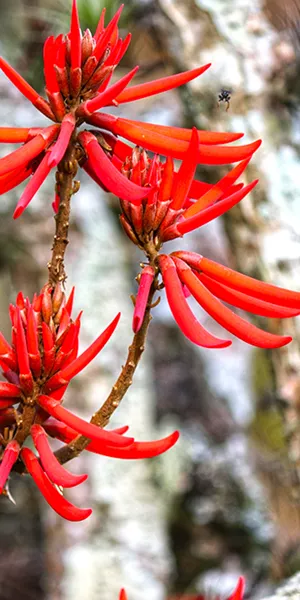
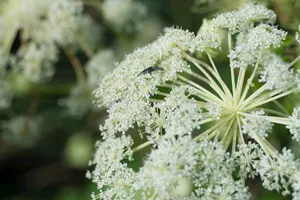
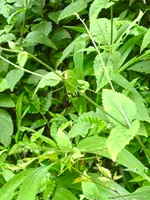
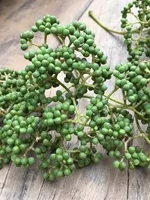




Hai Tong Pi Tang
Hai Tong Pi Tang
Chinese: 海桐皮汤
Pinyin: Hǎi Tóng Pí Tāng
Other names: Erythrina Wash
Number of ingredients: 12 herbs
Formula category: External formulas for External disorders
Conditions for which it may be prescribed: Trauma
- Invigorates the Blood
- Disperses swelling
- Dispels Wind, Dampness and Cold
- Removes Stagnation and relieves pain
Source date: 1742 AD
Source book: Golden Mirror of the Medical Tradition
The information provided here is not a replacement for a doctor. You shouldn't use it for the purpose of self-diagnosing or self-medicating but rather so you can have a more informed discussion with a professional TCM practitioner.
Hai Tong Pi Tang is a 12-ingredient Chinese Medicine formula with Erythrinae Barks (Hai Tong Pi) and Angelica Roots (Bai Zhi) as principal ingredients.
Invented in 1742 AD, it belongs to the category of external formulas for External disorders. Its main actions are: 1) invigorates the Blood and 2) disperses swelling.
In Chinese Medicine health conditions are thought to arise due to "disharmonies" in the body as a system. These disharmonies are called "patterns" and the very purpose of herbal formulas is to fight them in order to restore the body's harmony.
In this case Hai Tong Pi Tang is used by TCM practitioners to fight patterns like Blood Stagnation or Damp-Wind. From a Western Medicine standpoint, such patterns can give rise to a range of conditions such as trauma for instance.
On this page, after a detailed description of each of the twelve ingredients in Hai Tong Pi Tang, we review the patterns and conditions that Hai Tong Pi Tang helps treat.
The twelve ingredients in Hai Tong Pi Tang

Hai Tong Pi is a king ingredient in Hai Tong Pi Tang. Like the name indicates, it means it has more power than other ingredients in the formula.
1. Erythrinae Barks (Hai Tong Pi)
Part used: The bark
Nature: Neutral
Meridian affinity: SpleenKidneyLiver
Category: Herbs that dispel Wind and Dampness
Hai Tong Pi unblocks the Channels, invigorates the collaterals, dispel Dampness, and relieves pain. Erythrinae bark, Garden Balsam, Clematis root, Angelica root, Saposhnikovia root and Sichuan pepper shares similar functions.
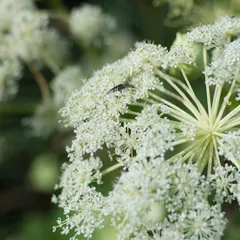
Bai Zhi is a king ingredient in Hai Tong Pi Tang. Like the name indicates, it means it has more power than other ingredients in the formula.
2. Angelica Roots (Bai Zhi)
Bai Zhi unblocks the Channels, invigorates the collaterals, dispel Dampness, and relieves pain. Erythrinae bark, Garden Balsam, Clematis root, Angelica root, Saposhnikovia root and Sichuan pepper shares similar functions.

Tou Gu Cao is a deputy ingredient in Hai Tong Pi Tang. This means it helps the king ingredient(s) treat the main pattern or it serves to treat a coexisting pattern.
3. Garden Balsam Stems (Tou Gu Cao)
Part used: The whole plant
Nature: Cool
Meridian affinity: SpleenKidneyLiver
Category: Herbs that dispel Wind and Dampness
Tou Gu Cao unblocks the Channels, invigorates the collaterals, dispel Dampness, and relieves pain. Erythrinae bark, Garden Balsam, Clematis root, Angelica root, Saposhnikovia root and Sichuan pepper shares similar functions.

Hua Jiao is a deputy ingredient in Hai Tong Pi Tang. This means it helps the king ingredient(s) treat the main pattern or it serves to treat a coexisting pattern.
4. Sichuan Pepper (Hua Jiao)
Part used: Dried pericarp of ripe fruit
Nature: Warm
Taste(s): Pungent
Hua Jiao unblocks the Channels, invigorates the collaterals, dispel Dampness, and relieves pain. Erythrinae bark, Garden Balsam, Clematis root, Angelica root, Saposhnikovia root and Sichuan pepper shares similar functions.
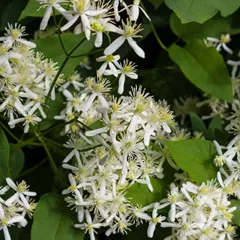
Wei Ling Xian is a deputy ingredient in Hai Tong Pi Tang. This means it helps the king ingredient(s) treat the main pattern or it serves to treat a coexisting pattern.
5. Clematis Roots (Wei Ling Xian)
Part used: Dried root and rhizome
Nature: Warm
Meridian affinity: Bladder
Category: Herbs that dispel Wind and Dampness
Wei Ling Xian unblocks the Channels, invigorates the collaterals, dispel Dampness, and relieves pain. Erythrinae bark, Garden Balsam, Clematis root, Angelica root, Saposhnikovia root and Sichuan pepper shares similar functions.
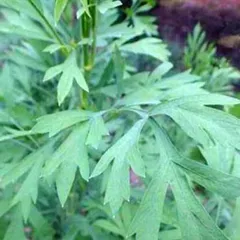
Fang Feng is a deputy ingredient in Hai Tong Pi Tang. This means it helps the king ingredient(s) treat the main pattern or it serves to treat a coexisting pattern.
6. Saposhnikovia Roots (Fang Feng)
Fang Feng unblocks the Channels, invigorates the collaterals, dispel Dampness, and relieves pain. Erythrinae bark, Garden Balsam, Clematis root, Angelica root, Saposhnikovia root and Sichuan pepper shares similar functions.
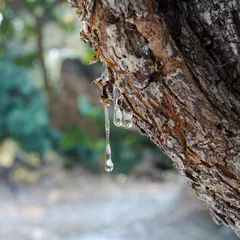
Ru Xiang is an assistant ingredient in Hai Tong Pi Tang. This means that it either serves to reinforces the effect of other ingredients or it moderates their toxicity.
7. Frankincense (Ru Xiang)
Part used: An aromatic resin obtained from boswellia trees
Nature: Warm
Meridian affinity: SpleenHeartLiver
Category: Herbs that invigorate the Blood
Ru Xiang invigorates the Blood and move Blood Stagnation. Together with the Wind-Damp dispersing nature of the key and deputy herbs, this formula effectively clears stasis from the channels and collaterals, reduces swelling, dispels Wind-Damp and promotes an environment where healing is
less obstructed by the pathogens of Wind, Dampness, Cold, and Stagnation.
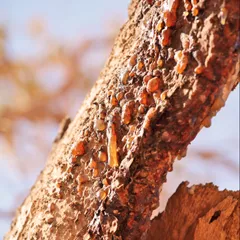
Mo Yao is an assistant ingredient in Hai Tong Pi Tang. This means that it either serves to reinforces the effect of other ingredients or it moderates their toxicity.
8. Myrrh (Mo Yao)
Part used: Dried resin of the tree
Nature: Neutral
Taste(s): Bitter
Meridian affinity: SpleenHeartLiver
Category: Herbs that invigorate the Blood
Mo Yao invigorates the Blood and move Blood Stagnation. Together with the Wind-Damp dispersing nature of the key and deputy herbs, this formula effectively clears stasis from the channels and collaterals, reduces swelling, dispels Wind-Damp and promotes an environment where healing is
less obstructed by the pathogens of Wind, Dampness, Cold, and Stagnation.
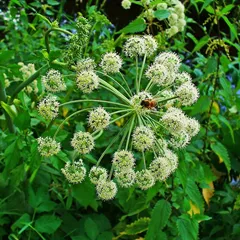
Dang Gui is an assistant ingredient in Hai Tong Pi Tang. This means that it either serves to reinforces the effect of other ingredients or it moderates their toxicity.
9. Dong Quai (Dang Gui)
Part used: Dried root
Nature: Warm
Meridian affinity: HeartLiverSpleen
Category: Tonic herbs for Blood Deficiency
Dang Gui invigorates the Blood and move Blood Stagnation. Together with the Wind-Damp dispersing nature of the key and deputy herbs, this formula effectively clears stasis from the channels and collaterals, reduces swelling, dispels Wind-Damp and promotes an environment where healing is
less obstructed by the pathogens of Wind, Dampness, Cold, and Stagnation.
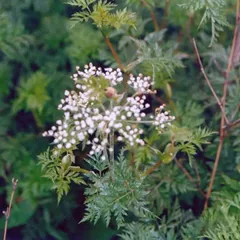
Chuan Xiong is an assistant ingredient in Hai Tong Pi Tang. This means that it either serves to reinforces the effect of other ingredients or it moderates their toxicity.
10. Szechuan Lovage Roots (Chuan Xiong)
Part used: Dried rhizome
Nature: Warm
Taste(s): Pungent
Meridian affinity: GallbladderLiverPericardium
Category: Herbs that invigorate the Blood
Chuan Xiong invigorates the Blood and move Blood Stagnation. Together with the Wind-Damp dispersing nature of the key and deputy herbs, this formula effectively clears stasis from the channels and collaterals, reduces swelling, dispels Wind-Damp and promotes an environment where healing is
less obstructed by the pathogens of Wind, Dampness, Cold, and Stagnation.
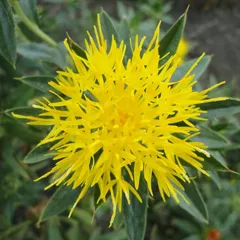
Hong Hua is an assistant ingredient in Hai Tong Pi Tang. This means that it either serves to reinforces the effect of other ingredients or it moderates their toxicity.
11. Safflowers (Hong Hua)
Hong Hua invigorates the Blood and move Blood Stagnation. Together with the Wind-Damp dispersing nature of the key and deputy herbs, this formula effectively clears stasis from the channels and collaterals, reduces swelling, dispels Wind-Damp and promotes an environment where healing is
less obstructed by the pathogens of Wind, Dampness, Cold, and Stagnation.
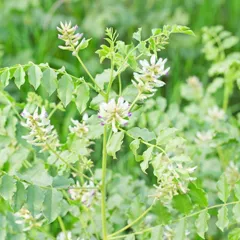
Gan Cao is an envoy ingredient in Hai Tong Pi Tang. This means that it directs the formula towards certain area of the body and/or harmonizes the actions of other ingredients.
12. Liquorice (Gan Cao)
Part used: Dried root and rhizome
Nature: Neutral
Taste(s): Sweet
Meridian affinity: HeartLungSpleenStomach
Category: Tonic herbs for Qi Deficiency
In general Gan Cao's main actions are as follows: "Tonifies the Basal Qi and nourishes the Spleen Qi. Clears Heat and dispels toxicity. Moistens the Lungsexpel phlegm and stop coughing. Relieves spasms and alleviates pain. Harmonizes and moderates the effects of other herbs."
In the context of Hai Tong Pi Tang, it is used because it moderates the pain and harmonizes the actions of the other ingredients.
Conditions and patterns for which Hai Tong Pi Tang may be prescribed
It's important to remember that herbal formulas are meant to treat patterns, not "diseases" as understood in Western Medicine. According to Chinese Medicine patterns, which are disruptions to the body as a system, are the underlying root cause for diseases and conditions.
As such Hai Tong Pi Tang is used by TCM practitioners to treat two different patterns which we describe below.
But before we delve into these patterns it is worth mentioning that they're often associated with the condition "trauma". Again it wouldn't be correct to say "Hai Tong Pi Tang treats trauma". Rather, Hai Tong Pi Tang is used to treat patterns that are sometimes the root cause behind trauma.
Now let's look at the two patterns commonly treated with Hai Tong Pi Tang.
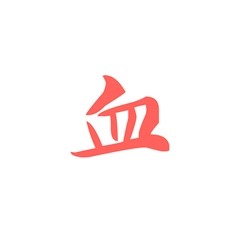
Blood (Xue) is one of Chinese Medicine's vital subtances. Learn more about Blood in Chinese Medicine
Blood Stagnation
Pulse type(s): Choppy (Se), Firm (Lao), Wiry (Xian)
Tongue color: Reddish-Purple
Symptoms: Lumps Tremor Numbness Dark face Dizziness Purple lips Purple nails Blotchy skin Restlessness Itching scalp Painful period Abdominal mass Scanty periods Abdominal pain Abdominal masses Skin capillaries Hesitant periods Tendency to bleed Premenstrual pain Dark colored blood Traumatic swelling Shoulder stiffness Absence of menstruation Boring fixed stabbing pain Frequent bleeding episodes Dark clots in menstrual blood Abdominal distention and fullness
Hai Tong Pi Tang is sometimes prescribed by TCM practitioners to treat Blood Stagnation. This pattern leads to symptoms such as dark face, purple lips, boring fixed stabbing pain and abdominal masses. Patients with Blood Stagnation typically exhibit choppy (Se), firm (Lao) or wiry (Xian) pulses as well as Purple tongue .
Blood Stagnation - also often referred to as "Blood Stasis" - is where the Blood flow is heavily restricted in all or parts of the body. It is one of the most important diagnostic conditions in Chinese Medicine because it is frequently the cause of intractable pain syndromes anywhere in the... read more about Blood Stagnation

Wind is one of the pathogenic factors in Chinese Medicine. Learn more about Wind in Chinese Medicine
Damp-Wind
Pulse type(s): Slippery (Hua), Floating (Fu)
Symptoms: Fever Nausea Sweating Body aches Muscle ache Swollen joints Aversion to cold Swollen neck glands Occipital stiffness Feeling of heaviness
Hai Tong Pi Tang is sometimes prescribed by TCM practitioners to treat Damp-Wind. This pattern leads to symptoms such as aversion to cold, fever, swollen neck glands and nausea. Patients with Damp-Wind typically exhibit slippery (Hua) or floating (Fu) pulses.
This pattern indicates the early stage of Exterior Wind and Dampness invasion. When there is Dampness obstructing the Connecting channels, it gives rise to swollen glands in the neck. When it obstructs the joints, it leads to pain there. It can also cause muscle ache and feeling of heaviness if the... read more about Damp-Wind
Formulas similar to Hai Tong Pi Tang
Gua Lou San is 42% similar to Hai Tong Pi Tang
Shen Tong Zhu Yu Tang is 42% similar to Hai Tong Pi Tang
Shu Jing Huo Xue Tang is 38% similar to Hai Tong Pi Tang
Tuo Li Xiao Du San is 33% similar to Hai Tong Pi Tang
Ge Xia Zhu Yu Tang is 33% similar to Hai Tong Pi Tang
Xue Fu Zhu Yu Tang is 33% similar to Hai Tong Pi Tang

